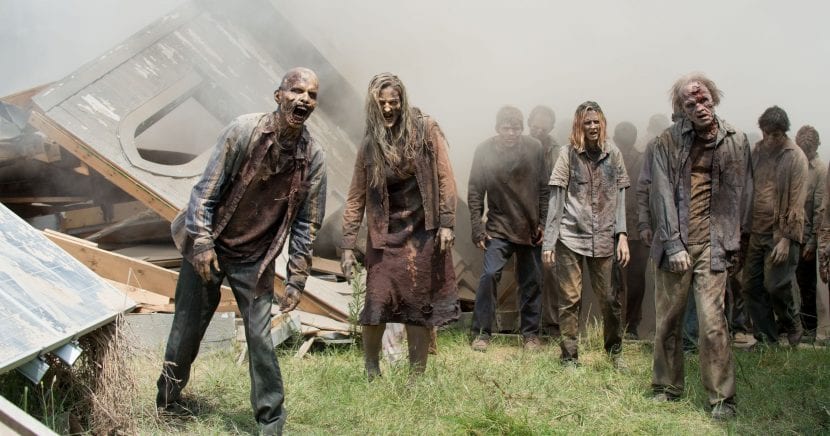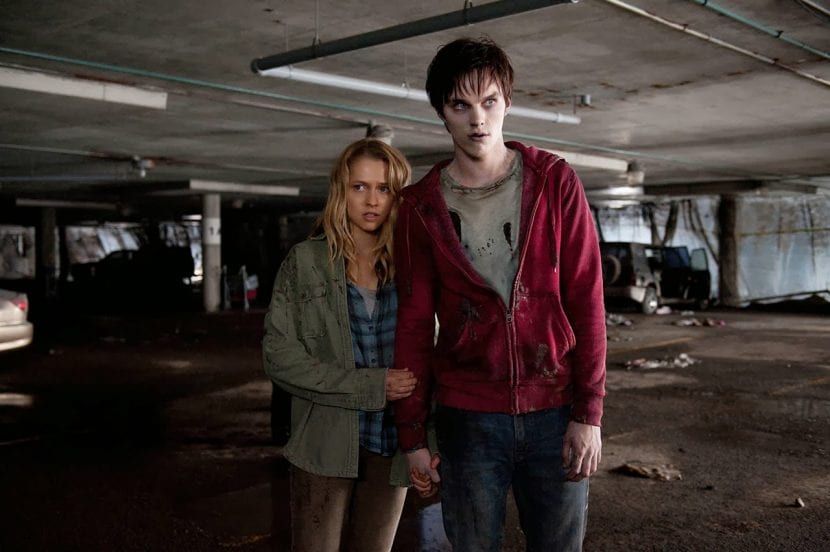
The zombies have been present in the collective imagination since the XNUMXth century. The European conquest of American lands, but mainly the arrival of African slaves to the "new world", was generating a series of myths and legends related to resurrected and soulless people.
At the cinema, the zombies are present since the 1930s, becoming since then one of the most exploited arguments within terror, with variations in tone of comedy, romance, drama and science fiction
Literature would begin to shape the myth, with writers of the stature of Edgar Allan Poe becoming participants. Some even consider Frankenstein by Mary Shelley as a variant of the subgenre.
Some of the most iconic zombie movies of all time
Night of the Living Dead by George A. Romero (1968)
This is the quintessential zombie movie. It defines the modern concept of the undead (resurrected beings that endlessly chase the living to devour them). Shot with a meager budget from US $ 114.000, it became a monumental box office success and a cult work.
Legion of Soulless Men by Víctor Halperin (1932)
Silent movie (except 15 minutes of sound) and in black and white, which marked the debut of the zombies in the cinema. Before the undead were an uncontrollable horde with an appetite for "brains", the seventh art represented them as an army manipulated by an unscrupulous villain, who controlled them for his personal gain.
resident evil by Paul WS Anderson (2002)

Based on the popular video game of the same name, this film (and the subsequent five installments), present a new vision of the myth: a virus created in a laboratory that accidentally spreads, plunging everything into chaos and death.
Rome versus Rome by Guiseppe Vari (1964)
Considered as the first film outside the United States to address the issue. Film inscribed within the Peplum genre (of swords and sandals in a Greco-Roman environment), it presents an army created by a sorcerer using black magic, more like ghosts than zombies.
The night of blind terror by Amando de Ossorio (1972)
Debut of the zombies in Spanish cinematography
A plot halfway between Night of the Living Dead by George A. Romero and The mount of the souls, short story by Gustavo Adolfo Bécquer published in 1862.
It had a notable box office success inside and outside of Spain, including in the United States. It would be followed by three more films directed by Ossorio himself and called the saga of the Blind Templars: Attack of the Eyeless Dead (1973) The cursed ship (1974) and The night of the seagulls (1975)
Rec by Jaume Balagueró and Paco Plaza (2007)
This Spanish mockumentary refreshed zombie cinema worldwide. It presents the variant of the unknown virus that infects those who are exposed; also use demon possession items, resulting one of the scariest horror films in a long time. Winner of two Goya Awards, turned into a "modern classic" with three sequels and a remake made in Hollywood.
World War Z by Marc Foster (2013)
A zombie apocalypse takes place all over the world, for the high-speed spread of a virus of totally unknown origin. Starring Brad Pitt, this is a super production of almost 200 million dollars of budget, something not very common in this subgenre, full of Class B movies (low budgets and "questionable quality"). Is Sequel confirmed with Pitt again as main star and David Fincher (Seven, The Mysterious Case of Benjamin Button) as director.
I'm legend by Frances Lawrence (2007)
A lonely Will Smith is the sole survivor of a zombie apocalypse on the island of Manhathan and which apparently has spread all over the world. An experiment seeking a cure for cancer spirals out of control and is the cause of disaster.
Robert Neville (Smith), a virologist immune to the virus, works in the Search for the antidote, while you must survive the attacks of the hordes of the undead. They are strong, fast, agile and even intelligent beings. It is the third adaptation of the homonymous novel by Richard Matheson published in 1954. Before they were: The last man on earth by Ubaldo Ragena and Sidney Salkow (1964) and The last man alive by Boris Sagal (1971).
Zombies Party (a night ... of death) by Edgar Wright (2004)
One of the most original zombie films of the last two decades. Acid and ironic comedy, with strong social criticism, with classic elements of the cinema of George A. Romero.
Memories of a teenage zombie by Jonathan Levine (2013)

Based on the novel Warm Bodies by Isaac Marion, this tape mix a youthful romance (quite successful in both literature and film for the last seven or eight years), with classic zombie horror. Praised by critics, the public's response, however, was rather tepid. It offers a pretty "pink" cure to the undead condition.
28 days by Danny Boyle (2002)
A virus housed in primates that were part of a controversial investigation, is accidentally released by activists in favor of animal rights. Very violent, fast and agile zombies. Success of the public and critics, which gave rise to a second part called 28 weeks later.
The dawn of the Dead by Zack Snyder (2004)
Before dedicating himself to the world of comics and superheroes, Snyder debuted with this remake of another of the classics of the "master" of zombie cinema, George A. Romero, imposing his distinctive visual style of going from slow motion to fast motion or vice versa in the same shot.
Plan 9 from outer space by Ed Wood (1956)
Considered by many critics as the worst movie ever made, as a result of the enthusiasm provoked by the film Ed Wood by Tim Burton (1994), many young moviegoers began to investigate the filmography of who is also classified as the worst director in history.
To this day, it is a "strange" cult work, with a plot at least interesting: some aliens come to earth with a mission to awaken the dead and turn them into a zombie army, as a measure to control a race that threatens to destroy the entire galaxy.
Image sources:The Comeback / 20Minutos / Once Upon a Book